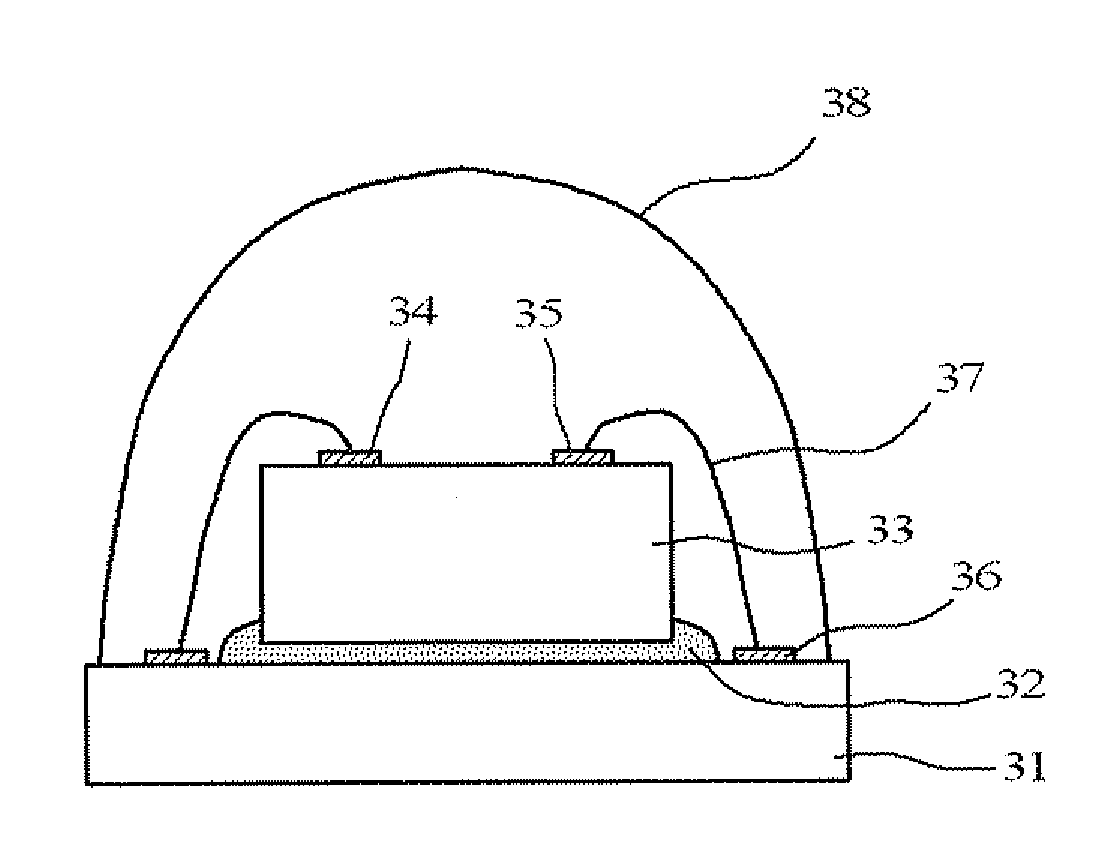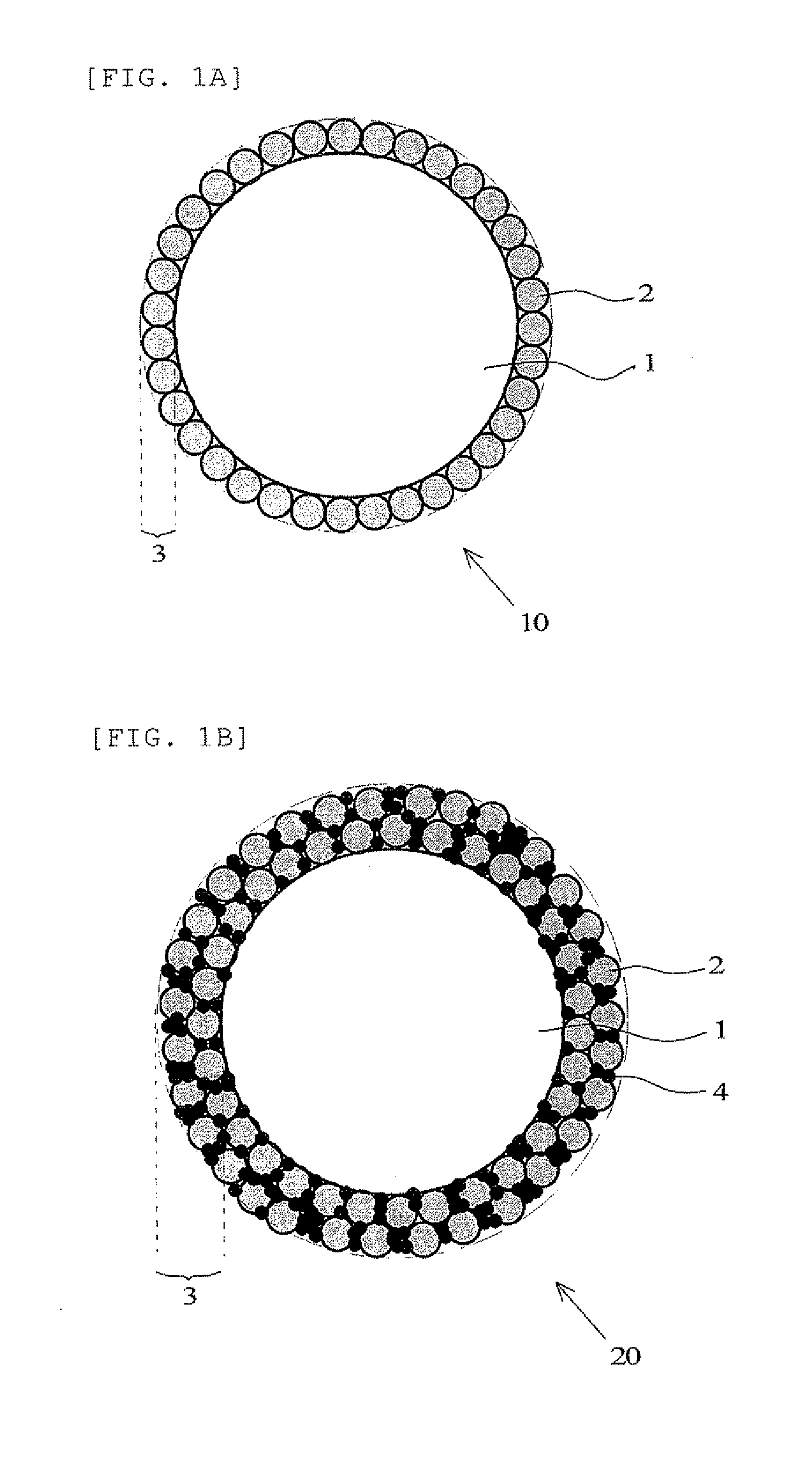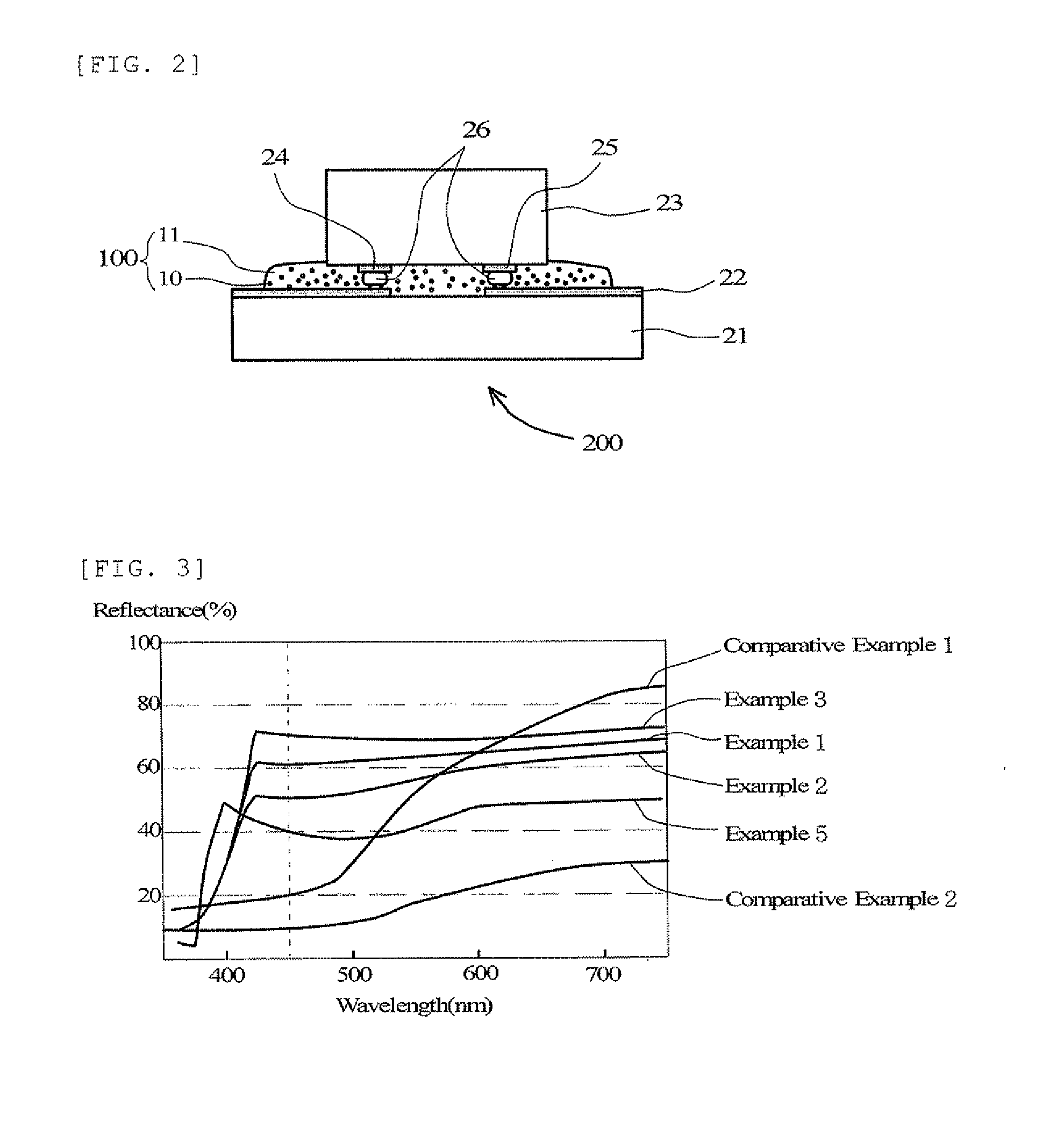Light-reflective anisotropic conductive adhesive and light-emitting device
a technology of anisotropic conductive adhesives and light-emitting devices, which is applied in the direction of non-metal conductors, conductors, non-macromolecular adhesive additives, etc., can solve the problems of deteriorating light-emitting efficiency of led elements b>33/b>, and achieve the effects of improving light-emitting efficiency, small dependence of reflecting properties on visible light wavelength, and improving light-emitting efficiency
- Summary
- Abstract
- Description
- Claims
- Application Information
AI Technical Summary
Benefits of technology
Problems solved by technology
Method used
Image
Examples
example 1
[0061]A light-reflective anisotropic conductive adhesive having a white appearance was obtained by uniformly mixing 12% by volume of a titanium dioxide powder having an average particle size of 0.5 μm (KR-380, Titan Kogyo, Ltd.) as light-reflective insulating particles and 10% by mass of Au-coated resin conductive particles having an average particle size of 5 μm (particles formed by coating a 0.2 μm-thick electroless gold plating on spherical acrylic resin particles having an average particle size of 4.6 μm (Bright 20GNB4.6EH, Nippon Chemical Industrial Co., Ltd.)) as conductive particles in a colorless, transparent thermosetting epoxy binder composition having a refractive index of approximately 1.50 (YX-8000, JER Co. Ltd.: containing 50% by mass of MeHHPA).
(Optical Reflectance Evaluation Test)
[0062]The obtained light-reflective anisotropic conductive adhesive was coated on a white ceramic plate to a dry thickness of 100 μm, and heated for 1 minute at 200° C. to cure. The reflecta...
example 2
[0065]A light-reflective anisotropic conductive adhesive having a white appearance was obtained in the same manner as in Example 1, except that the blended amount of the titanium dioxide powder was 7% by volume. Further, an optical reflectance evaluation test and a total luminous flux evaluation test for an LED-mounted sample were carried out in the same manner as in Example 1. The obtained results are shown in Table 1. The optical reflectance results are also illustrated in FIG. 3.
example 3
[0066]A light-reflective anisotropic conductive adhesive having a white appearance was obtained in the same manner as in Example 1, except that the blended amount of the titanium dioxide powder was 21% by volume. Further, an optical reflectance evaluation test and a total luminous flux evaluation test for an LED-mounted sample were carried out in the same manner as in Example 1. The obtained results are shown in Table 1. The optical reflectance results are also illustrated in FIG. 3.
PUM
| Property | Measurement | Unit |
|---|---|---|
| Percent by mass | aaaaa | aaaaa |
| Percent by mass | aaaaa | aaaaa |
| Percent by volume | aaaaa | aaaaa |
Abstract
Description
Claims
Application Information
 Login to View More
Login to View More - R&D
- Intellectual Property
- Life Sciences
- Materials
- Tech Scout
- Unparalleled Data Quality
- Higher Quality Content
- 60% Fewer Hallucinations
Browse by: Latest US Patents, China's latest patents, Technical Efficacy Thesaurus, Application Domain, Technology Topic, Popular Technical Reports.
© 2025 PatSnap. All rights reserved.Legal|Privacy policy|Modern Slavery Act Transparency Statement|Sitemap|About US| Contact US: help@patsnap.com



